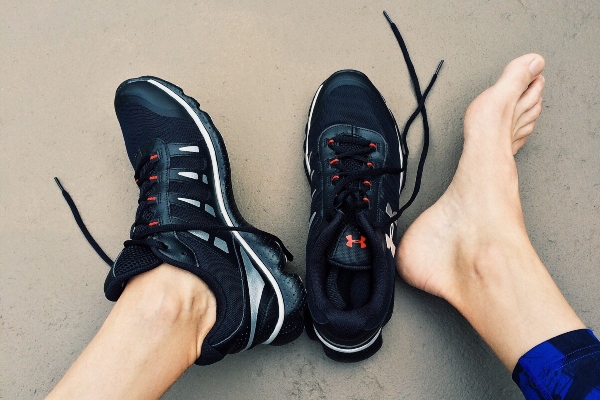Foot-pain in athletes
By Annette M. Zaharoff, MD
In athletes, foot pain may occur for many reasons. One of the more common problems seen among people active in sports is from a condition known as plantar fasciitis or heel spur syndrome. It generally starts as a dull intermittent ache, in the heel or arch, which may progress to a sharp persistent pain. Often times, the pain is worse in the morning with the first few steps, after sitting, after standing or walking and at the beginning of physical activity. As it progresses, it may become a sharp, persistent pain with all weight-bearing activities.
The plantar fascia is a thick fibrous material on the bottom of the foot. It attaches to the heel bone and fans out toward the toes to act like a bowstring to maintain the arch of the foot. A problem may occur when part of this fascia is tight and placed under tension.
Runners are more likely to experience plantar fasciitis due to the high impact or from improper shoe wear. Inflammation is produced causing pain at the attachment to the heel bone. Other contributing factors to overloading the fascia include: flat (pronated) feet; high arched, rigid feet; poor shoe support; toe or heel running; running on soft surfaces; sudden increases in weight or activity level; familial tendency.
Improvement may be slow if the condition has existed for along time. During recovery, loss of excess weight, good shoes and low- or no-impact activities should help the healing process. Ice should be applied 10 to 15 minutes several times per day. If the pain persists after two to three weeks, further evaluation by your sports medicine physician may be needed. More aggressive anti-inflammatory treatments, therapeutic exercise for stretching and strengthening the arch and foot along with padding, night splints, taping or inserts (orthotics) to ease pressure may be needed.
Surgery is rarely required.
In chronic cases, prolotherapy injections to regenerate the plantar fascia ligament may be used.
During recovery from plantar fasciitis, return to sport activities should be gradual. If you have pain during the activity or the following morning you are doing too much.
Remember to check your shoes for good support and cushioning to help prevent foot problems. If your symptoms are not improving, check with your sports medicine physician for additional help.
Dr. Annette Zaharoff is a sports medicine physician specializing in the non-surgical evaluation and treatment of injuries. She maintains a private practice in San Antonio and may be reached by calling her office at (210) 616-0646 or visiting her Web site www.drZmd.com






